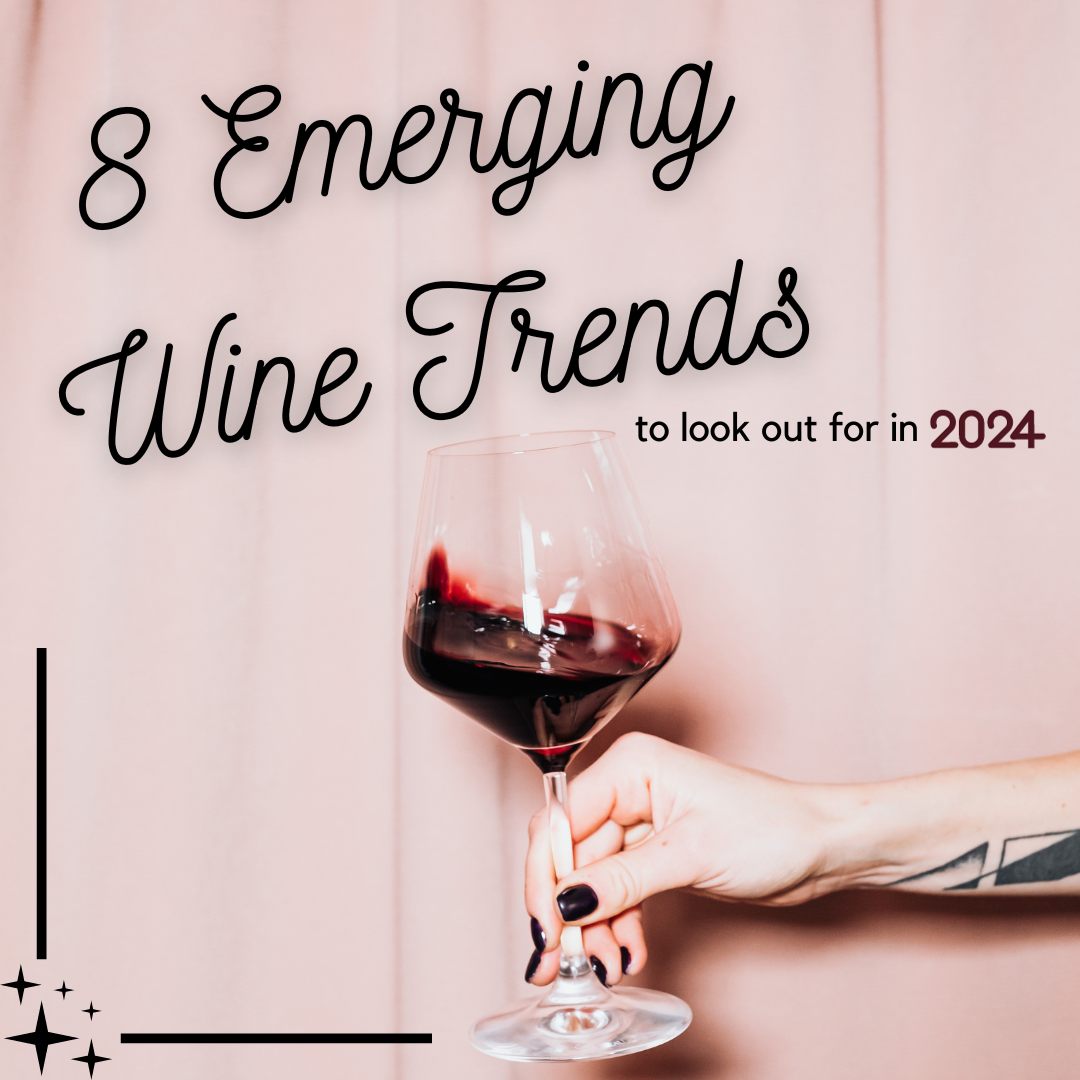8 Emerging Wine Trends to Look Out For in 2024
As we step into a New Year, the world of wine continues to evolve, with winemakers and consumers eagerly anticipating the latest trends that will shape the industry in 2024. From innovative production techniques to novel flavour profiles, the wine landscape is undergoing a transformation that promises to delight the palates of both connoisseurs and casual enthusiasts alike. Let's uncork the future and explore the top emerging wine trends that are set to make waves in 2024.
1. Sustainable Viticulture Takes Centre Stage
Consumers are increasingly conscious of sustainability and regenerability, and this extends to their choices in wine. In 2024, expect to see an increased focus on sustainable viticulture practices, with wineries adopting eco-friendly methods to reduce their environmental impact, ensuring consumers can look forward to wines that not only taste exquisite but also carry a sense of environmental responsibility. Some of the top initiatives that will gain momentum in 2024 are:
Organic farming
Organic farming prohibits the use of synthetic pesticides, herbicides, and fertilizers. Instead, it relies on natural alternatives such as compost, cover crops, and organic-approved substances for pest control, placing a strong emphasis on maintaining and improving soil health and fertility.
Organic wineries aim to promote biodiversity by avoiding genetically modified organisms (GMOs) and focusing on preserving and enhancing the natural ecosystems within and around the winery and vineyards.
Biodynamic farming
Both organic and biodynamic farming prioritize sustainable, environmentally-friendly practices, but biodynamic farming - developed in the early 20th century by Austrian philosopher Rudolf Steiner - incorporates spiritual and cosmic principles (such as lunar cycles) in addition to organic practices. Winemakers who choose to follow biodynamic principles, including lunar calendars, as part of their overall approach to grape cultivation and winemaking might, as one example, choose to harvest grapes during specific moon phases, believing that the gravitational pull of the moon affects sap flow and grape quality.
Using alternative energy sources
By incorporating alternative energy sources such as solar and wind power, wineries can enhance their environmental sustainability, reduce operating costs, and contribute to the overall transition toward more sustainable and resilient practices.
Environmentally friendly packaging
Biodegradable: Wineries are continuing to explore the use of biodegradable and compostable packaging materials such as biodegradable corks, compostable closures, and packaging made from plant-based materials.
Recycled: Some wineries are experimenting with alternative packaging materials, such as recycled or recyclable plastic, aluminum cans, and Tetra Paks. These materials are often lighter and may have a lower environmental impact compared to traditional glass bottles.
Eco-Friendly:
Wineries are choosing labels and adhesives that are more environmentally friendly, including the use of recycled or sustainably sourced paper, soy-based inks, and water-based adhesives.
2. Increase in Popularity of Wine Offered in Different Sizes
Canned and single-serve wines: Convenience and portability have driven the popularity of canned wines and single-serve formats. These options cater to on-the-go consumers and those looking for smaller portions without committing to a full bottle.
Boxed wine: With the rising costs of living, boxed wine gives you more for your money, tending to come in 3 to 5-litre options. In addition, it lasts longer compared to a bottle of wine since oxidation (what causes wine to spoil) is almost eliminated. The box also reduces consumers' and the company's environmental footprint since it's more sustainable to make and dispose of.
3. The Exploration of Lesser-Known Grape Varieties
In 2024, wine enthusiasts can anticipate a shift towards exploration and appreciation of lesser-known grape varieties. Winemakers are increasingly experimenting with unique and indigenous grapes, offering consumers a chance to expand their palates beyond the familiar. This trend celebrates diversity in the world of wine, inviting consumers to discover new and exciting flavours from regions that may have been overlooked in the past.
4. Low- and No-Alcohol Wines Gain Popularity
As health and wellness trends continue to shape consumer preferences, low- and no-alcohol wines are poised to continue gaining popularity in 2024.The global non-alcoholic wine market size was valued at over USD 1469 Million in 2022 and will reach over USD 4546 Million in 2028. Winemakers are responding to the demand for alternatives that cater to a more health-conscious, sober-curious audience. Expect an increase in well-crafted, alcohol-free and low-alcohol options that don't compromise on flavour or complexity.
5. The Come-Back of Orange Wine
Orange wine is a type of white wine made using a distinctive winemaking process that involves leaving the grape skins and seeds in contact with the juice for an extended period during fermentation. This results in a wine with a colour ranging from a pale amber to a deeper orange hue, hence the name.
While orange wine has a long history in certain winemaking regions, it has experienced a resurgence in popularity in recent years as part of the broader interest in natural and unconventional winemaking styles. At Dirty Laundry we first explored orange wine in 2019 with the launch of Au Naturel Gewurztraminer. Experts anticipate that orange wine varieties will reach USD 67 million by 2032.
6. Growing Interest in Wine and Food Pairing Experiences
With a growing interest in gastronomy, wineries are expanding their offerings to include immersive food and wine pairing experiences. This trend goes beyond traditional pairings, encouraging consumers to explore a wide range of flavour combinations that elevate the dining experience. Visitors to Dirty Laundry can experience an Elevated Tasting in our private wine tasting room, sampling a selection of our wines with thoughtful food pairings curated and prepared by our in-house chef. For those unable to visit the winery in person, we have a comprehensive blog, detailing specific recipes to pair with Dirty Laundry wines. The blog is also brimming with educational content designed to take you from wine enthusiast to wine connoisseur.
7. Rise in Virtual Wine Tourism
With travel becoming more accessible virtually, wine enthusiasts can explore vineyards and wineries from the comfort of their homes. Virtual wine tastings, online cellar tours, and interactive experiences with winemakers are becoming increasingly popular. This trend allows consumers to connect with their favourite wineries and discover new ones, regardless of geographical constraints.
8. Greater Emphasis on Cultural and Social Awareness
Wine consumers are showing interest in the social and cultural aspects of wine production. Wineries that embrace diversity, equity, and inclusion, as well as those with a strong social responsibility ethos, may continue to attract attention.
As we raise our glasses to 2024, the world of wine promises an exciting journey filled with innovation, sustainability, and a celebration of diversity. From the vineyards to the glass, these emerging trends reflect the industry's dynamic nature and its commitment to delivering exceptional experiences for wine lovers around the globe. Cheers to a vintage year of discovery and enjoyment!


